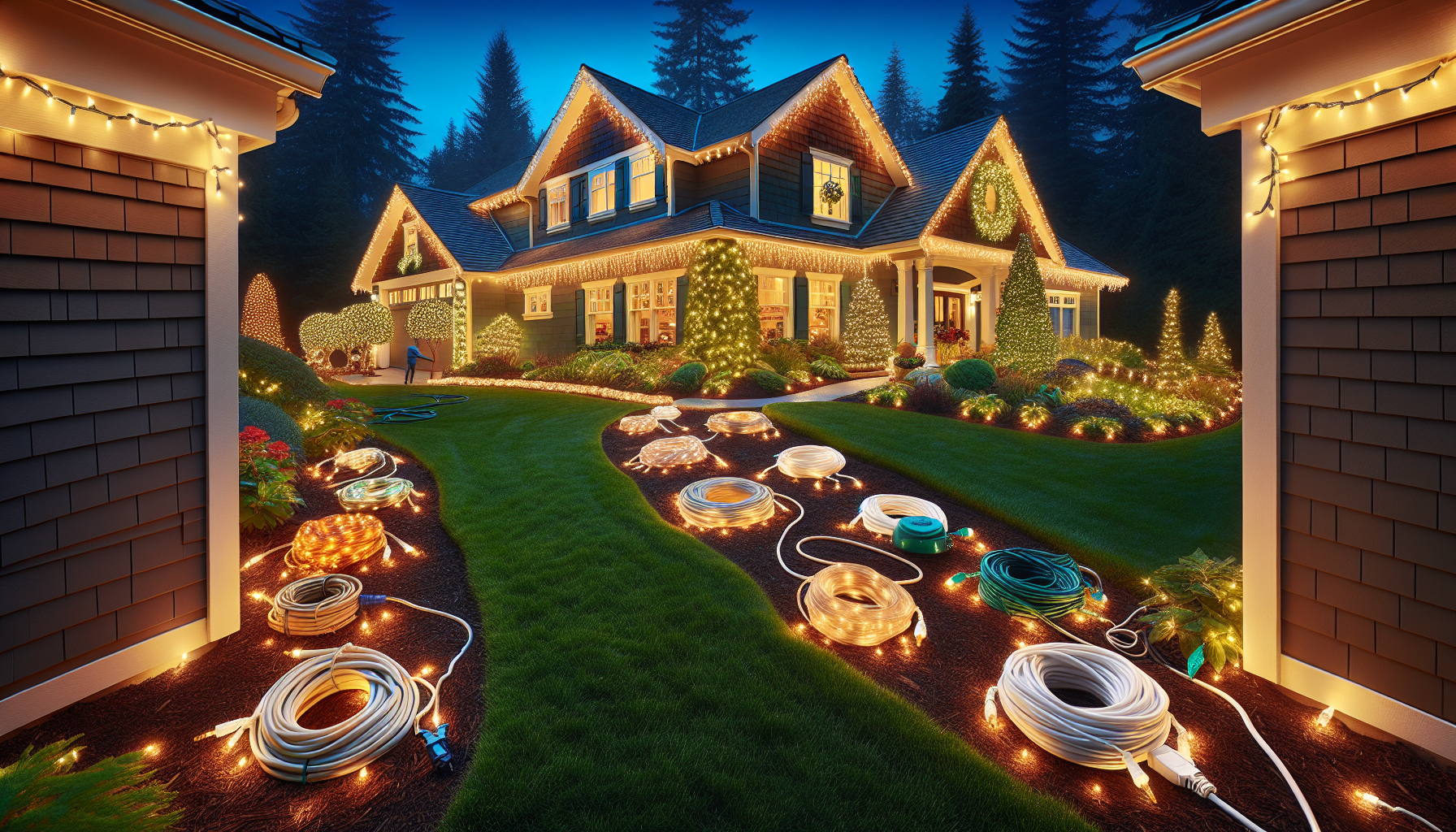Mastering the Art of Holiday Lighting: Avoiding the Big No-Nos
Table of Contents
- Keeping Cords Tidy and Organized
- Choosing the Right Cord Colors
- Connecting Power as You Go
- Avoiding Tripping Hazards
- Proper Strand Orientation
- Checking Your Equipment
- FAQ
Keeping Cords Tidy and Organized
When it comes to holiday lighting, the appearance of your setup is just as important as the lighting itself. One of the biggest no-nos is allowing your power cords to look like a tangled mess. Clients expect a professional, well-organized installation, and that starts with keeping those cords neat and tidy.
Instead of letting the excess cord hang freely, take the time to coil it up and secure it in a non-conspicuous spot, such as the lower mulch line or behind a downspout. A simple wrap of electrical tape can help keep the coil in place. This small attention to detail can make a big difference in the overall aesthetic of your work.
Choosing the Right Cord Colors
Another common mistake is using bright, eye-catching extension cords that draw unnecessary attention. Instead of opting for orange or other vibrant hues, stick to more subtle colors like white, cream, or green. These will blend seamlessly with the house and landscaping, creating a cohesive and polished look.
For example, white cords work well along downspouts, while green cords are a great choice for running along grass and mulch lines. By selecting the right cord colors, you can ensure your lighting installation enhances the holiday decor, rather than detracting from it.
Connecting Power as You Go
One of the most critical steps in holiday lighting installation is ensuring that power is connected before you start hanging the lights. This not only saves time but also helps you identify and address any issues with individual light strands or connections as you go.
For roof lights, make sure the power is running before you install the enclosed clips. This way, you can easily identify any bulbs that need to be screwed in tighter. Similarly, when working with mini lights, connect the power as you go, rather than testing all the strands beforehand. This allows you to catch any problems with connections or flickering lights, and address them immediately.

Avoiding Tripping Hazards
Keeping extension cords off of walkways and driveways is another important consideration. Not only does this create a tripping hazard, but it can also detract from the overall appearance of your work.
Instead of running cords across high-traffic areas, take the time to route them along the grass or mulch line. This may require using more extension cords, but it’s a small price to pay for a clean, safe installation. If you must cross a driveway, consider using driveway protectors to keep the cords secure and out of the way.
Proper Strand Orientation
When it comes to lighting up trees and bushes, it’s crucial to start with the female end at the top. This ensures that you can easily connect the power source and avoid the hassle of having to take the entire strand down and start over.
Similarly, never try to connect two separate bushes or trees by running the lights through empty space. Instead, use a jumper cable to create a continuous, tidy look. This not only enhances the appearance of your work but also helps prevent potential issues down the line.
Checking Your Equipment
Finally, it’s important to thoroughly inspect your equipment before installing the lights. This includes checking your vampire plugs to ensure the prongs are properly aligned, and never connecting two male plugs to the same socket.
Additionally, resist the temptation to test your lights by using the “hammer test” while they’re still plugged in. This can lead to dangerous shocks and should be avoided at all costs.
FAQ
What is a vampire plug?
A vampire plug is a type of electrical connector that allows you to tap into an existing power source, such as an extension cord or light strand, without the need for splicing or cutting the cord. These plugs have sharp prongs that pierce the insulation to make the connection.
Why is it important to check the orientation of vampire plugs?
Checking the orientation of your vampire plugs is crucial because if the prongs are not properly aligned, it can create sparks and potentially cause issues with your lighting setup. Always make sure the prongs are facing the correct direction before attaching the plug to your power source.
How can I avoid tripping hazards when running extension cords?
The best way to avoid tripping hazards is to keep extension cords off of walkways and driveways whenever possible. Route them along the grass or mulch line, and use driveway protectors if you must cross a high-traffic area. This helps keep the cords out of the way and reduces the risk of someone tripping over them.
Why is it important to connect power as I go, rather than testing all the lights beforehand?
Connecting power as you install the lights allows you to identify and address any issues with individual light strands or connections immediately. This saves time and ensures that all the lights are working properly before you move on to the next section of the installation. Testing all the lights beforehand can be time-consuming and may not catch problems that only become apparent once the lights are in place.
What is the “hammer test,” and why should I avoid it?
The “hammer test” refers to the practice of testing lights by hitting them with a hammer or other object while they are still plugged in. This can lead to dangerous shocks and should never be done. Instead, always unplug the lights before attempting any kind of testing or troubleshooting.
